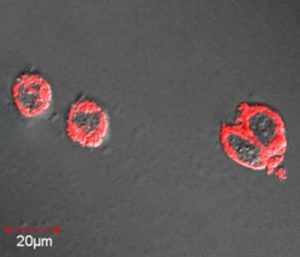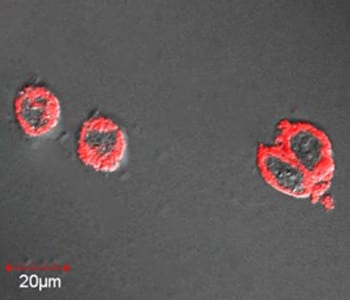 Lanthanide(III) complexes have steadily found increasing use in both biosensing and bioimaging due to their advantageous emission properties, such as unique narrow emission (full width at half maximum < 10 nm), large Stokes shifts, and long luminescent lifetimes (> 1 μs). In particular, their long luminescent lifetimes mean that the short-lived background fluorescence interference that occurs when using time-gated luminescence technique can be removed.
Lanthanide(III) complexes have steadily found increasing use in both biosensing and bioimaging due to their advantageous emission properties, such as unique narrow emission (full width at half maximum < 10 nm), large Stokes shifts, and long luminescent lifetimes (> 1 μs). In particular, their long luminescent lifetimes mean that the short-lived background fluorescence interference that occurs when using time-gated luminescence technique can be removed.
Although rapid progress has been achieved in this area, there are still some problems. Most of the reported lanthanide(III) complexes containing organic chromophores are unsuitable for bioimaging because they require high-energy and short-wavelength ultraviolet excitation, which can cause direct tissue damage. Moreover, the susceptibility of lanthanide(III) luminescence to quenching effects caused by water or hydroxyl groups needs to be solved, and their water solubility and dispersibility, kinetic and thermodynamic stability, luminescence efficiency, and biocompatibility need to be improved. These problems have impeded practical application of lanthanide(III) complexes in biomedicine.
Now, the group of Zhao and Huang based at Nanjing University of Posts & Telecommunications, China have reported an effective strategy to fabricate nanoprobes with highly efficient lanthanide luminescence by embedding both Ir(III) complexes (as the sensitizer) and Eu(III) complexes (as the energy acceptor) into silica nanoparticles. This kind of nanoprobe exhibits multiple advantages in biosensing and bioimaging, including long excitation wavelength, high quantum efficiency, long emission lifetime, narrow emission bands, excellent water dispersibility, and good biocompatibility. Importantly, successful application of the nanoprobe in bioimaging with visible excitation and time-gated luminescence bioimaging was demonstrated by the researchers.
Considering that the surface of silica nanoparticles can be easily functionalized with various chemical functionalities, such as amines, carboxylates, epoxides and thiols, the easy bioconjugation of the lanthanide nanoprobes with biomolecules through covalent coupling reaction can be realized. Thus, the group believes that this design strategy will be a versatile and convenient way to design excellent lanthanide(III) complex-based bioprobes for practical biomedical applications.

















